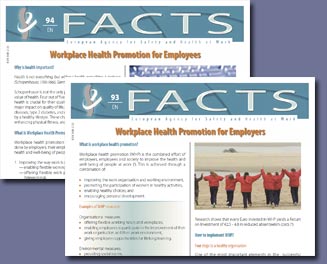 |
 |
|
Workplace Health Promotion Guides Issued Health is not everything, but without health, everything is nothing (Schopenhauer, 1788-1860, German philosopher)
In the UK, the use of the workplace to promote healthy lifestyles amongst employees as a way of combating the cost to industry of work related sick absence has become big business for many organisations in the private, voluntary and public sector. With it's origins in the Dame Carol Black report issued 2008 - Working For A Healthier Tomorrow, the government has decided that workplace health promotion is one of the key tools in addressing sickness caused by the workplace. Whilst there are those who believe that this is an exercise in blaming the sick worker for their own health problems created by work, there are those who see this as an opportunity to focus the minds of the employer on educating their workforce about healthy lifestyles and promoting and developing policies within organisations which will support and encourage a healthier working environment. However, as is often the case, the emphasis in Europe differs from that of the UK. The guidance leaflets detail what the Agency means by workplace health promotion: Workplace health promotion (WHP) encompasses everything done by employers, their employees, and society to improve the health and well-being of people at work. It includes: * enabling flexible working time * providing possibilities for lifelong learning such as job rotation and job enlargement * providing a supportive psychosocial work environment * getting employees to participate in the work environment improvement process * offering courses on social competences, like dealing with stress It goes further and adds: WHP means more than simply meeting the legal requirements for health and safety; it also means employers actively helping their staff improve their own general health and well-being. Within this process it’s essential to involve employees and to take into account their needs and views on how to organise work and the workplace. On the other hand the emphasis in the UK is about cutting costs to industry of sick absence, irrespective of whether or not it is the workplace which is causing the sickness absence in the first place. The recent changes to the medical certificate and introduction of the so called 'fit note', being an example of this. Equally the development and use of the term 'worklessness' irrespective of the course, implies blame on the individual for their circumstances causing loss of employment. It also limits the type of health issues to being those simply within the control of the individual and places no emphasis on the employer adhering to existing good health and safety practice and preventing injury and ill health at work by introducing policies and procedures beyond the basic legal requirement. The targets for the UK are simply alcohol, diet and exercise and smoking. Latterly, mental health and sexual health are being added by some primary care trusts as targets for those organisations they fund in promoting workplace health. Cynics may say that this purely using the workplace to address some of the ills within UK society rather than ensuring health, safe and productive workplaces. Many believe that this emphasis on workplace health will be the backbone of Tory future health and safety policy - i.e. blaming behaviour and individual lifestyle rather than the lack of responsibilities amongst employers to their workforce. Certainly when they dismantle health and safety legislation and protection to the workforce and introduce a US style of health and safety free-for-all including self certification by the Employer; we can expect to see more workplace health promotion campaigns taking its place. OSHA clearly believes there is a place for both good health and safety legislation and promotion and creating a healthier workforce via lifestyle campaigns within the workplace. The two guidance documents are aimed at giving advice to both employer and employee with regard to running campaigns in the workplace. Both can be downloaded from the E-Library Database. See also: Health Work and Wellbeing website which details the UK government strategy. Source: OSHA |
